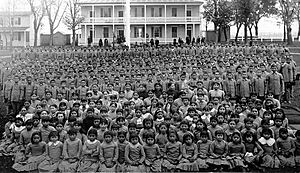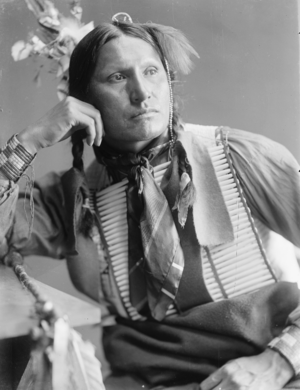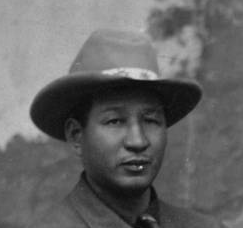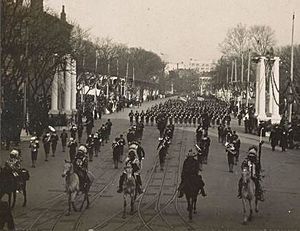Wild Westing facts for kids
Wild Westing was a term used by Native Americans for performing in shows like Buffalo Bill's Wild West. Between 1887 and World War I, over 1,000 Native Americans took part in these shows. Most were Oglala Lakota people from the Pine Ridge, South Dakota reservation. They were the first Lakota people to perform in these shows.
At that time, the Bureau of Indian Affairs wanted Native Americans to adopt white customs. But William Frederick Cody, known as "Buffalo Bill", used his influence to get Native American performers for his show. Cody treated his Native American employees fairly, just like his white cowboys.
Wild Westers earned good wages. They also received transportation, housing, plenty of food, and gifts of money and clothes at the end of each season. Wild Westing was very popular with the Lakota people. It helped their families and communities. It offered hope when many believed Native Americans were disappearing.
Today, people in America and Europe are still very interested in Native cultures. They enjoy modern Pow-wows, traditional skills, horse culture, dancing, and cooking. They also buy Native American art and music. Pow-wow culture started in Wild West shows. It is now popular with Native Americans across the United States. Some Oglala Lakota people still continue their family show business traditions. Their ancestors first worked for Cody and other Wild West shows.
Contents
- The "Vanishing Race" Idea
- The Fight Over Native American Images
- Public Interest in Native American Culture
- Famous Wild Westers
- The Carlisle Indian Industrial School
- Oglala Lakota Wild Westers
- Carlisle Wild Westers
- World Fairs and Expositions
- Theodore Roosevelt's 1905 Inaugural Parade
- Wild Westing Today
The "Vanishing Race" Idea
During the Progressive Era (late 1800s and early 1900s), people became very interested in Native American culture. Newspapers, novels, Wild West shows, and public exhibits showed Native Americans as a "vanishing race." Their numbers had gone down after the Indian Wars. Survivors faced poverty and strict rules on reservations.
Many researchers and artists believed they needed to study Native American peoples before they "vanished." This included anthropologists, historians, photographers, and early movie-makers. Many lived on reservations for a long time to study Native Americans. This time was called the "Golden Age of the Wild West." Famous photographers included Gertrude Käsebier and Edward Curtis.
The Fight Over Native American Images

During the Progressive Era, the U.S. government wanted to take Native American lands. They also restricted Native cultural and religious practices. They sent Native American children to boarding schools. People agreed that Native Americans needed education. But they disagreed on how fast they should adopt white society's ways.
Reformers, including the Bureau of Indian Affairs and Christian groups, wanted quick assimilation. They promoted sending children to off-reservation boarding schools. The Society of American Indians was against Wild West shows. They believed these shows were harmful to Native Americans. They thought the shows made Native people look like "savages."
From 1886 until World War I, reformers fought against Wild West shows. They used world fairs and parades to show a different image. They presented students from schools like the Carlisle Indian Industrial School. These students were shown as a new generation of Native Americans embracing education and modern life.
Public Interest in Native American Culture
Wild West shows were very popular in the United States and Europe. People could see and hear some of the first Americans. They saw them not as strange objects, but as people with a lively culture. In 1893, over two million people saw Buffalo Bill's Wild West at the Columbian Exposition in Chicago, Illinois.
"Buffalo Bill" Cody started his traveling show in 1883. It was so successful that fifty similar shows appeared in just two years. Buffalo Bill toured the U.S. and Europe until he died in 1917. Wild West shows were like "dime novels come alive." Millions enjoyed seeing historical reenactments. These included the Battle of Little Big Horn. They also saw Lakota horse culture, archery, dancing, cooking, and music.
Visitors could walk through model Indian tipi "villages" and meet performers. They could buy crafts made by women artists. They could also get autographed postcards and photos from famous Wild Westers.
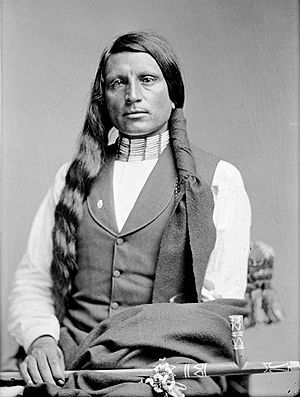

Between 1887 and World War I, over 1,000 Native Americans went "Wild Westing." Most were Oglala Lakota from Pine Ridge, South Dakota. They were the first Lakota people to join these shows.
The Bureau of Indian Affairs wanted Native people to assimilate. But Col. Cody used his influence to get Native American performers. Buffalo Bill treated Native American employees as equals with white cowboys. Wild Westers received good wages, transportation, housing, and food. They also got gifts of money and clothing from Buffalo Bill at the end of each season.
Wild Westers worked as performers, interpreters, and recruiters. Men earned money for themselves and their families on the reservation. Female performers were paid extra for infants and children. They also earned money by making and selling Lakota crafts.
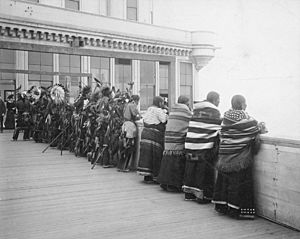
Performers had to be sober and well-behaved. They agreed not to drink, gamble, or fight. They also agreed to return to their reservation after each tour. Shows hired respected elder Native men to appear in parades. This helped ensure young men behaved well when visiting towns. Traditional Oglala Lakota chiefs and former U.S. Army Indian Scouts helped enforce the rules.
Most performers stayed for one or two seasons. Some Wild Westers became cowboys, stuntmen, artists, musicians, educators, authors, or movie actors. Chief Flying Hawk performed in Wild West shows for over 30 years.
Wild Westing was very popular with the Lakota people. It helped their families and communities. It offered opportunities when many believed Native Americans were a "vanishing race." It also offered a safe place for Lakota leaders after the Sioux Wars. The tours also gave them freedom from the strict rules of government reservations for six months each year. Wild Westing was a way to quietly resist the strict policies of the Bureau of Indian Affairs.
Wild Westing helped the Lakota preserve their culture and religion. Shows usually toured from late spring to late autumn. This was similar to the traditional buffalo hunt season. In the shows, the Lakota performed dances that were banned on reservations at the time. Today, Lakota dancers thank Cody and the Wild Westers for helping to preserve these dances.
Wild Westing allowed individuals to make choices about their own lives. It boosted their self-esteem. They enjoyed performing for appreciative audiences. It offered adventure, as performers traveled to big cities around the world. They also met new cultures. Some performers even settled in Europe. Between shows, Wild Westers played games like ping pong and dominoes. They learned these games during their European tours.
Traveling and performing was hard work. So, rest and relaxation were important. Performers could travel freely by car or train. They could go shopping, sightseeing, visit friends, and attend parties.
Famous Wild Westers
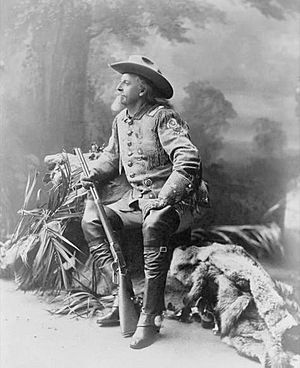
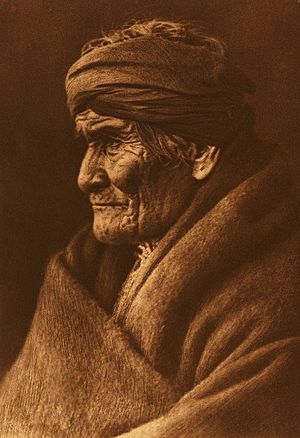
Wild Westers taught the American and European public about Native American history and culture. The Wild Wester community was diverse. It included U.S. Army Indian Scouts and famous prisoners of war. Some famous performers were Lakota Chief Sitting Bull, Ghost Dancers Kicking Bear and Short Bull. Apache Chief Geronimo also performed.
Students from the Carlisle Indian Industrial School like Luther Standing Bear and Frank C. Goings also joined. Chiefs Iron Tail and Red Shirt became international celebrities. Chief Iron Tail was the most famous Native American of his time. His image was shared by photographers across continents. Chief Red Shirt was popular with journalists and was quoted often.
Early novels, Wild West shows, and photographers helped create the image of the Lakota people as the iconic mounted warrior. This popular idea in the U.S. and Europe came from Lakota performers. They reenacted the Sioux Wars and showed their horse skills, dancing, and music.
The Carlisle Indian Industrial School
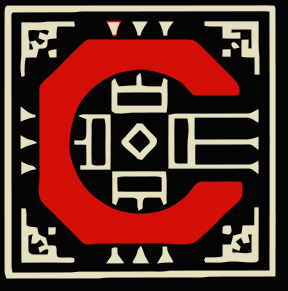
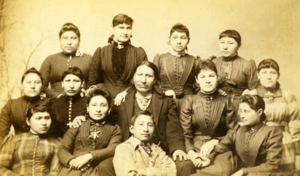
The Carlisle Indian Industrial School in Carlisle, Pennsylvania, was a leading Indian boarding school. It operated from 1879 to 1918. Carlisle was the first boarding school located far from reservations. It was in an Eastern area, away from anti-Indian prejudices and Native cultural influences.
Carlisle set the standard for 26 other government boarding schools. It also influenced hundreds of private schools. Over 10,000 Native American children from 140 tribes attended Carlisle. Tribes with many students included the Sioux, Chippewa, Seneca, Oneida, Cherokee, Apache, Cheyenne, and Alaskan tribes. Carlisle offered hope when people believed Native Americans were a "vanishing race."
Carlisle was founded on the idea that Native American children would learn skills to succeed in white society. It grew beyond just a trade school. Nearby Dickinson College provided professors and college-level education. Students excelled in music, debating, journalism, and sports. They also had internships and a summer program living with white families and earning wages.
The Carlisle Indian Band, Carlisle Cadets, and Carlisle Indians football team became nationally famous. The band performed at world fairs and presidential events. The football team was a powerhouse in the early 1900s. They won games against top colleges like Harvard and Yale. In 1911, led by legendary athlete Jim Thorpe and coach Pop Warner, they upset Harvard. Thorpe scored all of Carlisle's points in that game.
Some Native Americans see attending Carlisle as a great achievement, like going to a top university. The family tradition of Carlisle alumni is one of pride and success stories. Carlisle was a unique school. It helped produce a new generation of Native American leaders in the United States.
Oglala Lakota Wild Westers
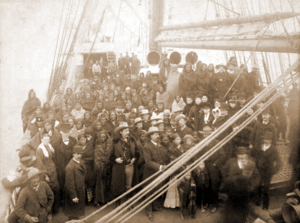

Wild Westing and the Carlisle Indian School offered education, opportunity, and hope. This was at a time when the Lakota people faced difficult conditions. Most Wild Westers were Oglala Lakota from Pine Ridge, South Dakota. They were the first Lakota people to go Wild Westing.
Known as "Show Indians", Oglala Wild Westers called themselves Oskate Wicasa, or "Show Man." This was a title of great honor. On March 31, 1887, Chief Blue Horse, Chief American Horse, and Chief Red Shirt and their families sailed to England. This was for Buffalo Bill's first international tour. They performed at the Golden Jubilee of Queen Victoria. The group included 97 Native Americans, many animals, and 108 horses.
Since 1887, Wild Westing has been a family tradition for many Pine Ridge families. Between 1906 and 1915, 570 people from Pine Ridge went Wild Westing. Often, entire families worked together. The Wild Wester community was similar to circus communities. Frank C. Goings was a recruiting agent for Buffalo Bill. He was a Carlisle alumnus and Wild Wester himself. He chose the best chiefs, dancers, singers, and riders. He also coordinated travel and housing. He toured Europe and the U.S. with his family for many years.
Carlisle Wild Westers
Many Oglala Lakota Wild Westers from Pine Ridge Reservation attended Carlisle. They were drawn by the adventure, pay, and opportunities. They were hired as performers, chaperones, interpreters, and recruiters. Wild Westers from Pine Ridge enrolled their children at Carlisle from its start in 1879 until it closed in 1918.
In 1879, Oglala Lakota leaders Chief Blue Horse, Chief American Horse, and Chief Red Shirt enrolled their children in the first class at Carlisle. They wanted their children to learn English, trade skills, and white customs. Luther Standing Bear was taught to be brave. He left the reservation to attend Carlisle and bring honor to his family. His father celebrated this brave act by giving away horses and goods.
World Fairs and Expositions

During the Progressive Era, Native American performers were very popular. Millions of visitors at world fairs saw Native Americans. They were shown as a "vanishing race" or as interesting people for study. Reformers and the Society of American Indians disagreed with how Wild West shows presented Native Americans. They thought the shows used unfair stereotypes.
Instead, Carlisle students were shown as new Native American leaders. They were seen as embracing education and modern life. The fight over the image of Native Americans began when reformers tried to stop Buffalo Bill from being at the Columbian Exposition of 1893 in Chicago.
Instead, the Exposition featured a model Indian school and a Native American village. Buffalo Bill set up his own show, "Buffalo Bill's Wild West and Congress of Rough Riders of the World," near the fair entrance. It had a large arena for eighteen thousand people.
Seventy-four Wild Westers from Pine Ridge performed there. Cody also brought one hundred more Wild Westers from other reservations. They visited the Exposition at his expense. Over two million people saw Buffalo Bill's Wild West outside the Exposition. Many thought it was part of the World's Fair.
The "vanishing race" theme was also shown at the Trans-Mississippi Exposition of 1898 in Omaha, Nebraska. It was also seen at The Pan-American Exposition of 1901 in Buffalo, New York. Organizers brought together Wild Westers from different tribes. They showed Native Americans as a "vanishing race" at "The Last Great Congress of the Red Man." This was meant to show them meeting for the last time before disappearing.
The Louisiana Purchase Exposition of 1904, in St. Louis, was the last big fair before World War I. Organizers wanted to show Native Americans in a modern, scientific way. They showed contrasting images. A meeting of Native American educators was held. Oglala Lakota Chief Red Cloud and Chief Blue Horse, both 83 years old, spoke to audiences.
A model Indian School was placed on a hill. This was so Native Americans below could see their future, as shown by the Bureau of Indian Affairs. On one side of the school, "blanket Indians" showed their art. These were men and women who kept their traditional dress. On the other side, boarding school students showed their achievements in reading, writing, music, and arts. The Carlisle Indian Band performed, as did the Haskell Indian Band.
Theodore Roosevelt's 1905 Inaugural Parade
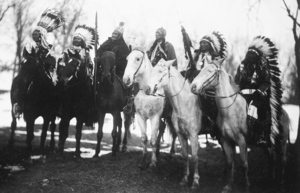
On March 4, 1905, Wild Westers and Carlisle students showed different images of Native Americans. This was at the First Inaugural Parade of Theodore Roosevelt. Six famous Native American Chiefs met in Carlisle, Pennsylvania. They practiced the parade with the Carlisle Cadets and Band. These chiefs included Geronimo (Apache), Quanah Parker (Comanche), and American Horse (Oglala Lakota).
President Roosevelt watched the parade. When the Wild Westers and Carlisle Cadets and Band appeared, President Roosevelt waved his hat. Everyone in his box stood up. They saw the six famous Native American Chiefs. They wore face paint and feather headdresses. They rode on horseback. They were followed by the 46-piece Carlisle Indian School Band and 350 Carlisle Cadets.
Geronimo led the group, in full Apache clothing. His horse also had war paint. It was reported that the Chiefs "created a sensation." They were more noticed than the uniformed Carlisle students.
Wild Westing Today
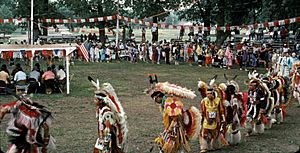
Wild Westers still perform in movies, pow-wows, pageants, and rodeos. Some Oglala Lakota people continue their family show business traditions. Their ancestors worked for Buffalo Bill and other Wild West shows. People in America and Europe are still very interested in Native cultures. They enjoy modern Pow-wow culture.
Pow-wow culture started in Wild West shows. It is popular with Native Americans across the United States. It is also a source of tribal business. People continue to enjoy traditional Native American skills. These include horse culture, ceremonial dancing, cooking, and buying Native American art, music, and crafts. Several national projects celebrate Wild Westers and Wild Westing today.
The National Museum of American History at the Smithsonian Institution keeps and displays photographs. These include those by Gertrude Käsebier and others who captured Wild Westing.




